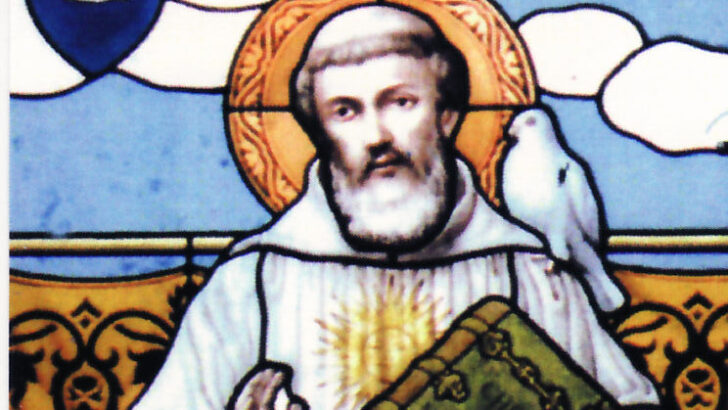The Bishop of Kildare and Leighlin Denis Nulty recently said the 6th century Irish monk, St Columbanus, should be made patron of Europe and invited people to attend the 26th International Columban Day in Carlow in 2025.
People who are not very familiar with early Irish saints tend to confuse St Columba (Columbanus) with his contemporary of same name, St Columba (Columcille). The first sailed out from Bangor for the continent in about 590, while the second left Derry for Iona in 563.
In his book Early Irish Saints, John J. Ó Ríordáin said that St Columbanus was “probably” born “on the Carlow-Wexford border” in the 530s or early 540s. Information about the Saint’s early life are slim, however, around the “year 560 he became a student at the relatively new monastery of St Sinell on the island of Cleenish in Lough Erne.”
Going back to Bangor, St Columbanus entered the “monastic life at St Comgall’s foundation at Bangor in Co. Down,” said Mr Ríordáin. The Saint spent many years there and was ordained to priesthood “and probably became head of the monastic school.”
According to Mr Ríordáin, in the year 590, when St Columbanus was about 50 years of age, he and other twelve monks sailed from Belfast Lough to the continent of Europe. “In 591, after a considerable amount of travelling, they found themselves in Burgundy”, there they made their first monastic settlement.
St Columbanus founded monasteries in France, Austria, Switzerland and Italy. In the last one, he founded Bobbio in 614 and died in November of the following year.
“The influence of Columbanus on the continent can hardly be exaggerated,” wrote Mr Ríordáin. Robert Schuman, then French Foreign Minister said in July 1950 that “St Columbanus is the patron saint of those who seek a united Europe.”


 Renata Steffens
Renata Steffens Saint Columbanus
Saint Columbanus 